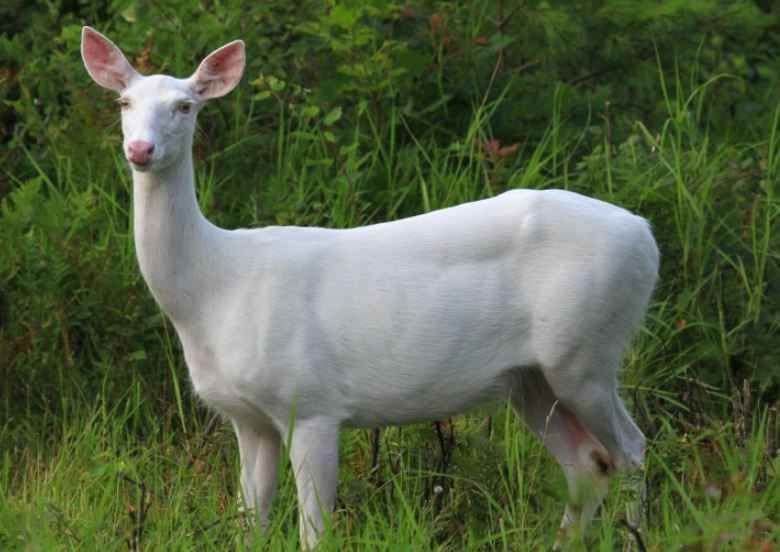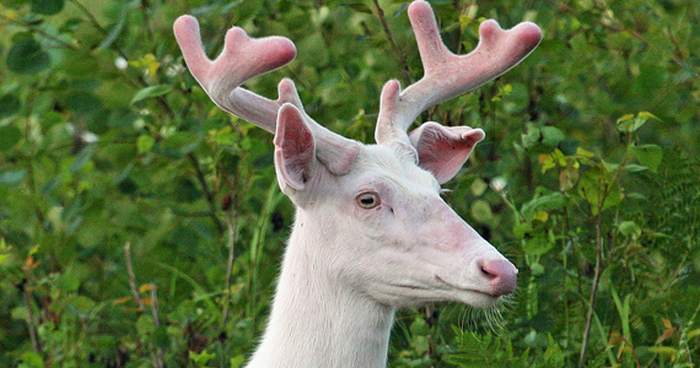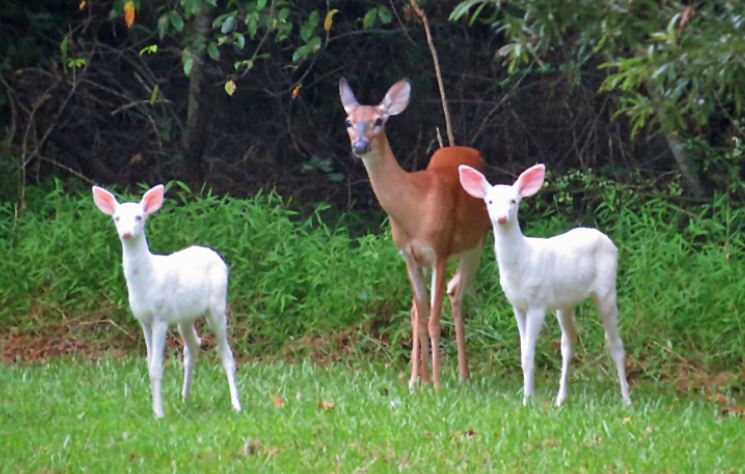Albino deer. Most have heard of white deer or at least thought about seeing one, but what’s the deal with albino white-tailed deer? Among the questions most often asked is, “What causes some whitetail deer to be albinos?” Well, although albino deer a rare for the most part, albinism is not.
Albinism is typically a recessive trait found in many animals including mammals, birds, reptiles, fish and even plants! Albino animals do not have the gene for normal coloration and do not produce the enzyme responsible for skin, hair, and tissue coloration. The result of this genetic oddity is the total absence of body pigment — so albinos just looks white.
White Deer and Other Albinos
In addition to a lack of body pigment, the eyes of an albino deer and other animals are pink because blood vessels behind the lenses show through the un-pigmented irises. As you might have guessed, albinism is not a great trait for an animal, either predator or prey, unless they live in areas with constant snow cover, constant darkness or possibly even high up in the sky.
Obviously, being totally white year-round makes concealment in most deer habitat difficult. To make matters worse, many albinos generally have poor eyesight, which is another genetic factor linked with albinism.

Albino Deer are Rare
Animals that lack pigmentation and have poor eyesight are not common on the surface of the earth. Perhaps that is why albino deer are rare: A lack of camouflage combined with poor eyesight increase the likelihood of fatal attacks by deer predators.
The truth is that plants and animals are constantly adapting through chances i the gene pool, though the process can take hundreds or even thousands of years to impart appreciable changes. Typically, a gene will only be passed on through a population if the traits that those genes control are beneficial to an animal. However, some traits, such as albinism, can be carried by individual animals and not necessarily be exhibited.

Facts About White, Albino Deer
Because albinism is a recessive trait, both buck (father) and doe (mother) must carry the gene before it even has the possibility to be expressed in their offspring. It is a fact that an albino deer bred to another albino would have only albinos.
An albino bred to a normal brown and white deer (with no recessive genes for albinism) would produce only normally-pigmented white-tailed deer. Offspring from this cross would carry the recessive gene for albinism, but would be normally colored.
When two deer (parents) that are carriers of albinism breed there is a one-in-four chance they will produce an albino fawn. As I mentioned earlier, recessive genetic traits typically become less common unless they confer a survival advantage or are artificially enhanced for expression through selective breeding.

The Odds of an Albino Deer
Based on deer hunter reports, only about one deer in 30,000 whitetail is an albino deer! However, it must be pointed out that not all white deer are true albinos. Some white whitetails have normally pigmented noses, eyes and hooves. In that instance, it would only be a genetic mutation for hair color but not other pigments.